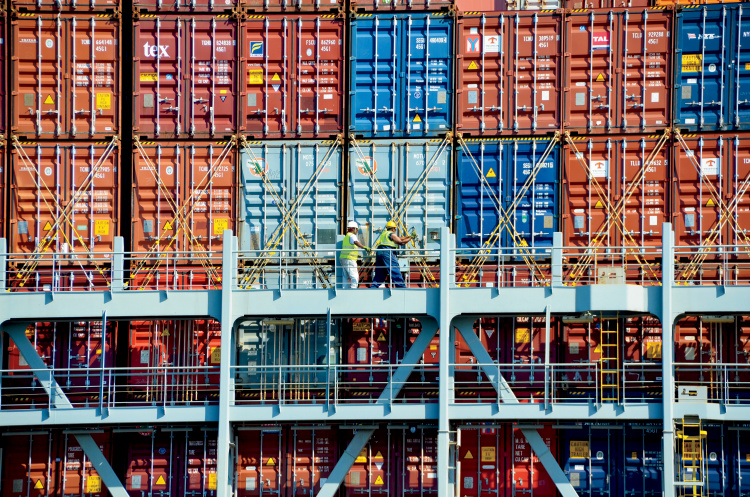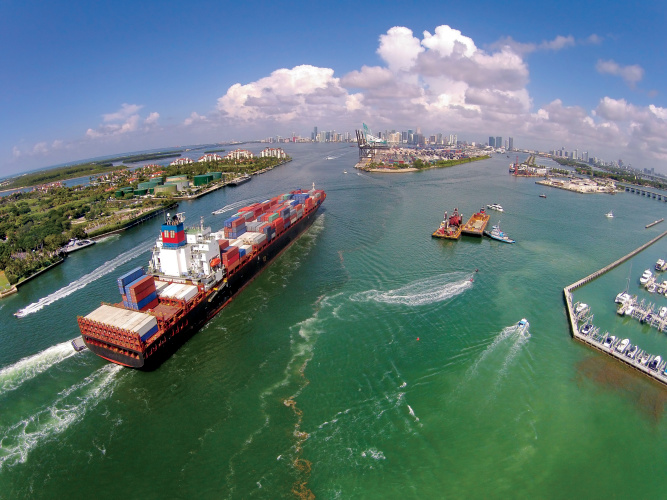Home > Florida > Florida Farm to Table > Why Florida Ports are Gateways to the World
Why Florida Ports are Gateways to the World
In partnership with: Florida Department of Agriculture and Consumer Services

The flow of products to global markets through Florida ports strengthens the state’s economy – and is made possible by Florida ports.
“Last year, Florida ports exported nearly $60 billion in agricultural products,” says Doug Wheeler, Florida Ports Council president and CEO. “Florida’s proximity to Latin America, the Caribbean and beyond makes our ports the gateway to those markets, allowing Florida’s agricultural businesses to export their goods better, faster and cheaper.”
Because of the location, Florida ports see commodities headed in all directions. Florida seaports have recognized and seized new and growing opportunities made possible by the expansion of the Panama Canal and increasing global demand for Florida products.
In fact, Florida seaports, along with their federal and state partners, have invested more than $2 billion in seaport infrastructure since December 2010 to ensure that cargo can move efficiently in and out of the state, Wheeler says.
“The growing size of vessels in conjunction with the expansion of the Panama Canal has influenced many local communities and respective seaports to invest in seaport-related infrastructure,” Wheeler says. Major port infrastructure improvements have included channel and harbor deepening and widening, berth and wharf expansion and repair, capacity at gates and terminal yards, and modern, more efficient cargo-handling equipment.
“Now that Florida ports have the infrastructure to accommodate more cargo, we are seeing steady growth year after year in total cargo tonnage and value of cargo,” Wheeler says. “With $3.3 billion in capital improvements identified at Florida’s seaports over the next five years, we expect these numbers to continue to grow, creating a stable economy for current Floridians and future generations.”
 Agriculture’s Gain
Agriculture’s Gain
Florida agriculture certainly benefits from port-system improvements. Take orange juice, for example. Oranges are handpicked in Florida groves and then transported by truck to a processing plant and made into juice. From there, the product begins a journey across the country or around the world by plane, train or truck. Some of it will pass through a Florida port, destined for Europe, Asia or Central America. But citrus is just the beginning, as Florida has more than 300 agricultural commodities to share with the world.
“Aside from fruits and vegetables, Florida ports export many other agricultural products such as wood pulp, fertilizers and lumber,” Wheeler says. “For example, our ports exported more than $75 million in lumber in 2017.”
Port of Jacksonville’s top exports include lumber, paper and wood pulp. At Florida’s Port Everglades, grocery items make up nearly half (about 48 percent) of the shipments, followed by poultry, nonalcoholic beverages and fruit. Leading markets for the Port’s export shipments include the Netherlands Antilles, the Bahamas, Cuba, Trinidad and Tobago, and the Dominican Republic. Port Everglades Cold Storage provides nearly 100,000 square feet of variable, temperature-controlled, refrigerated storage.

Primary cargoes at Port Manatee include tropical fruits and vegetables along with citrus juices and beverages. Located on Florida’s Gulf Coast, the Port is the closest U.S. deepwater port to the Panama Canal. Port Manatee offers 202,000 square feet of refrigerated space, including 30,000 square feet of freezer space. Grocery items, nonalcoholic beverages and grapefruit comprise the majority (about 60 percent) of the Port of Miami’s agricultural exports with Japan, the Dominican Republic and Haiti, making up the top destinations for these shipments. Seaboard Marine, which offers direct regular service between the U.S. and the Caribbean Basin, Central and South America, is a major ocean carrier at the Port. Its fleet of refrigerated containers, which use only ozone-friendly refrigerants, is one of the newest in the industry.



